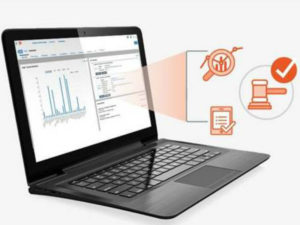 by Jennifer Dowd, Marketing Director for Kronos, Inc.
by Jennifer Dowd, Marketing Director for Kronos, Inc.
View the entire newsletter for more articles: 2018 – NJAC County Biz – March
When disaster strikes, Federal Emergency Management Association (FEMA) assistance is called upon. This year, though, FEMA has been put through the ringer and stretched farther than predicted. Individuals, small businesses, and municipalities applying for assistance or looking for reimbursement are faced with the fear that there simply might not be enough cash to go around even with additional funding being approved. City and county governments may feel particularly vulnerable knowing they need to aid their citizens affected by the disaster, but also address their own damages/losses. This is where emergency preparedness plays a big role.
As many cities and counties put plans in place to deploy first responders in the event of an emergency, what often gets forgotten are the many other employees who pay a vital role, including those in the back-office, and keeping track of all labor hours associated with the response. “When facing a crippling disaster, the first reaction is to evaluate the situation, ensure the safety of the community and communicate with citizens. Unfortunately, one of the most critical considerations — how to pay for it all — is often an afterthought.”[1] After the disaster is not the time to realize there should have been a process in place to account for recovery and clean-up costs.
To recoup as many dollars as possible from FEMA and other supporting agencies, there are very strict reporting procedures that come with these requests. Reconciling labor data to demonstrate which personnel hours were dedicated to recovery versus standard work hours is a complicated process. This can be exacerbated when a municipality still collects all time manually. According to one county struck by a catastrophic flood who uses an automated time tracking and scheduling solution, “You can’t imagine how much staff you will need to deal with an emergency”.
Even non-reimbursable costs are important to track so city/county leaders and citizens have a holistic view of the total impact of the event.
The Office of Inspector General (OIG) under Homeland Security does regular audits of FEMA money reimbursed to government entities. In an effort to guide other municipalities who are either creating emergency preparedness plans or have just undergone a natural disaster, they’ve released a report with audit tips that include instances where discrepancies have led to the request for more information on questionable claims. According to OIG, “The system must disclose the financial results for all FEMA-funded activities accurately, currently, and completely. It must identify funds received and disbursed, and reference source documentation (i.e., canceled checks, invoices, payroll, time and attendance records, contracts, etc.).”[2]
In any emergency preparedness plan, the welfare and safety of the citizens is the most important area of concentration. However, once a plan to execute on deploying public safety is completed, don’t stop there. Move the conversation to tracking and reporting. This can mean the difference between funded vs unfunded recovery dollars. Make sure you can answer this vital question: Are you able to generate labor reports by the nature of the work performed, by the location at which it was performed, and by the project for which the work was done? Avoid the financial disaster after the disaster. Create written guidance on how to track labor costs as part of your formal emergency plan.
[1] https://www.kronos.com/resources/proactive-approach-emergency-preparedness
[2] https://www.oig.dhs.gov/sites/default/files/assets/2017/OIG-17-120-D-Sep17.pdf
